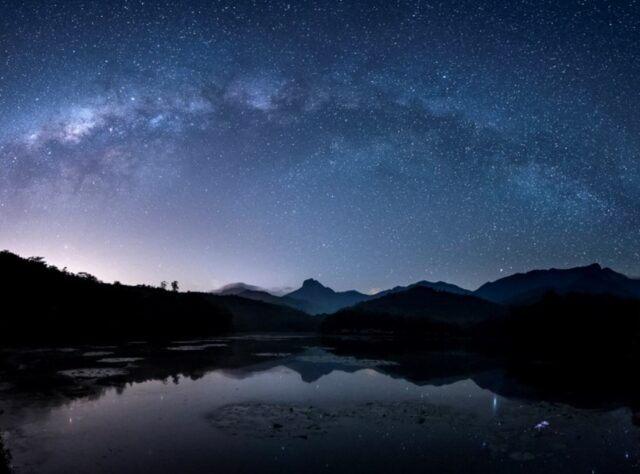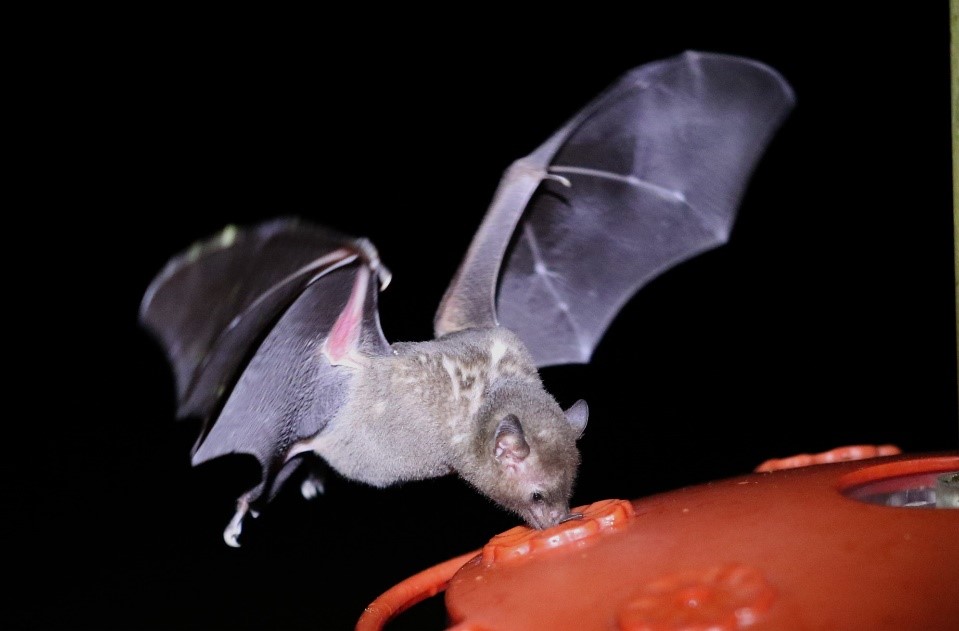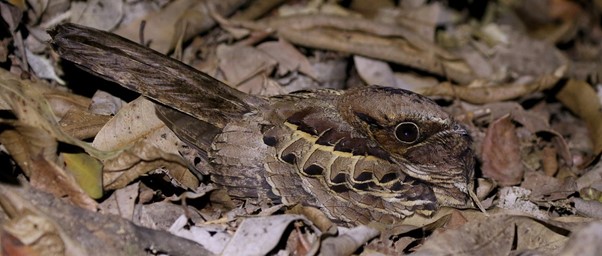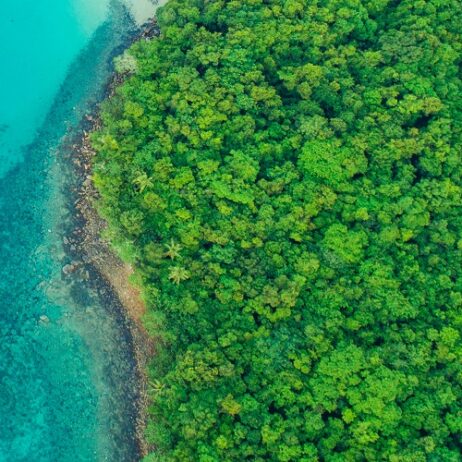
The REGUA wetland at night. With little light pollution in this remote part of the Guapiaçu Valley, the Milky Way is a familiar sight on night hikes at REGUA. Image credit: Vitor Marigo/https://www.instagram.com/vitormarigo/
This is the first of two stories by Lee Dingain, UK representative for REGUA, who writes from the field about a sanctuary – Brazil’s Atlantic Forest – you can help expand this year by supporting our Buy an Acre programme. See here to read part two.
At Reserva Ecológica de Guapiaçu, a nature reserve in Brazil’s Atlantic Forest, better known simply as REGUA, dusk falls at around the same time all year round, between 6pm and 7pm.
After the evening meal, most guests at REGUA’s visitor lodge are unwinding and reviewing their sightings after a day’s birding or exploring the rainforest. However, despite a couple of caipirinhas and the comfort of the sofa, I am itching to get back out. For naturalists, tropical rainforests are incredible places to be during the day, with unfamiliar and often bizarre flora and fauna everywhere you look, and strange sounds and smells filling the air. But for me, there is something extra special about venturing into the rainforest at night, so as the lodge guests begin to turn in, I grab my kit and head off.
At REGUA, nocturnal wildlife can be seen without leaving the lodge premises. With the residual heat from the day still hanging in the air, I switch off the lights on the veranda and wait. Within minutes I see movement in the darkness as a group of Bokermann’s Nectar Bats (Lonchophylla bokermanni) descend to sip sugar water from the hummingbird feeders just a metre from me. These Endangered bats shy away from bright lights, so I set up my camera and tripod in the dark, and sitting quietly, manage to capture a few photos using only the torch for illumination.

Bokermann’s Nectar Bat (Lonchophylla bokermanni) regularly visit the lodge hummingbird feeders after dark to feed on sugar water. Image credit: Lee Dingain
The welcome coolness of the night air boosts my energy levels as I set off down the lodge driveway then onto a short forest trail that, although I have walked countless times, feels narrower and more enclosed in the beam of the torch. Without the familiar daylight soundtrack of tyrant flycatchers, tanagers, and cicadas, the forest is eerily quiet save for a few calling frogs and the occasional clicking bat.
I slow my pace to scan for the eyeshine of birds, mammals, amphibians, and insects, sometimes tricky to pick out amongst the numerous water droplets on the trees. A couple of Slaty-breasted Wood-rails (Aramides saracura) call in the distance, then in the torch light I pick up the glowing eyes of a couple of Big-eared Opossums (Didelphis aurita) high up in the canopy, their bare prehensile tails anchoring them to the branches.
The trail ends at a junction with the Yellow Trail that circles the REGUA wetland, and one of the most popular trails with birdwatchers, tourists, and scientific researchers alike. I hear the distinctive whistle of a Common Pauraque (Nyctidromus albicollis) and soon pick up its eyeshine on the trail.
Common and widespread throughout the Neotropics, this species of nightjar is frequently flushed from the leaf litter on the trails during the day, but at night they are much more approachable. Creeping closer, I get to within two metres of this cryptic bird, that remains completely unperturbed by my presence while I take a few photos in the torch light before carefully moving on.

The cryptically patterned Common Pauraque (Nyctidromus albicollis) is the most common nocturnal bird species encountered on night hikes at REGUA. Image credit: Lee Dingain
Following the lake edge, the calls of frogs become almost deafening. I search the vegetation at the water’s edge with the torch and quickly find several males of one of the more common species, (Hypsiboas semilineatus), sometimes known as the Sensitive Treefrog.
Restricted to the Brazilian Atlantic Forest, these medium-sized tree frogs are highly variable in skin colour and patterning, ranging from plain or spotted greens and yellows to interesting combinations of grey, brown and black. Found around permanent bodies of water, at certain times of the year the vegetation around the lake edges is covered with newly emerged froglets, their dark grey bodies glistening in the torchlight.
See here to continue reading about Lee’s night-time expedition of REGUA.
Our Buy an Acre programme comes with a promise: when you donate to help our partners save acres of land, you join a movement to save the basis of all life on Earth.
The Atlantic Forest that Lee Dingain describes so vividly needs your help. Decades of deforestation have seen it lose 93% of its original cover in Brazil and yet the life in the last 7% remains incredible: 20,000 plant species, close to 1,000 bird species, over 300 reptile species, nearly 500 amphibian species, 260 mammal species – a trove of life you can make a difference for all, today.
Starting this year, your support to our Buy an Acre programme will fund our partner REGUA’s creation of a new Atlantic Forest reserve. Donate today to help save a global biodiversity hotspot!

